Propagation is the way radio waves travel through free space (also known as medium). The way these waves travel may impact its signal strength.
- Line-of-sight propagation The radio waves travels directly from sender to receiver without any obstacles. If the distance between sender and receiver gets larger, the signal will get weaker. This loss is known as Free Space loss

- If there are obstacles near its path (within the Fresnel zone), the radio waves reflecting off those objects may arrive out of phase with the signals that travel directly and reduce the power of the received signal.

- Propagation through obstacles Radio waves may penetrate thru obstacles that appear in its path. Radio waves lose strength if they travel through obstacles made of more conductive materials.
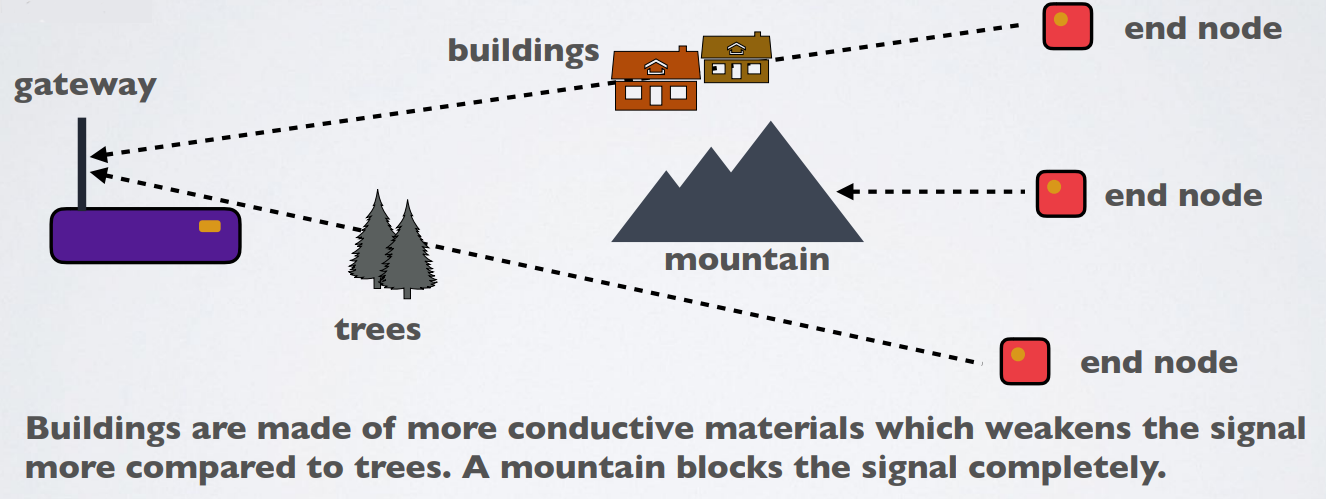 Propagation through diffraction. Diffraction is where radio waves are bent around sharp edges. A signal from a transmitter may be received by the gateway even though it may be “shaded” by a large obstacle.
Propagation through diffraction. Diffraction is where radio waves are bent around sharp edges. A signal from a transmitter may be received by the gateway even though it may be “shaded” by a large obstacle.
There are more types of propagations which impact the signal strength but these are the important ones.
Free Space Loss
The free space loss can be calculated as follow:
Lfs = 32.45 + 20xlog(D) + 20xlog(f)
Lfs = Free space loss in dB
D = Distance between end node and gateway in km
f = frequency in MHz
Example
- D=0.01 km, Lfs=32.45+20xlog(0.01)+20xlog(868) = 51 dB
- D=0.05 km, Lfs=32.45+20xlog(0.05)+20xlog(868) = 65 dB
- D=0.10 km, Lfs=32.45+20xlog(0.10)+20xlog(868) = 71 dB
- D=0.50 km, Lfs=32.45+20xlog(0.50)+20xlog(868) = 85 dB
- D=1.00 km, Lfs=32.45+20xlog(1.00)+20xlog(868) = 91 dB
Fresnel Zone
- The Fresnel zone is an elliptical shaped body around the direct line of sight path between the end node and the gateway.
- Any obstacle within this volume, for example buildings, trees, hilltops or ground can weaken the transmitted signal even if there is a direct line of sight between the end node and the gateway.
- The maximum radius of the Fresnel zone, located half the distance between end node and gateway is calculated as follow
- r = 8.657 x sqrt(D / f)
- r = Fresnel zone radius in m
- D = distance in km
- f = frequency in GHz
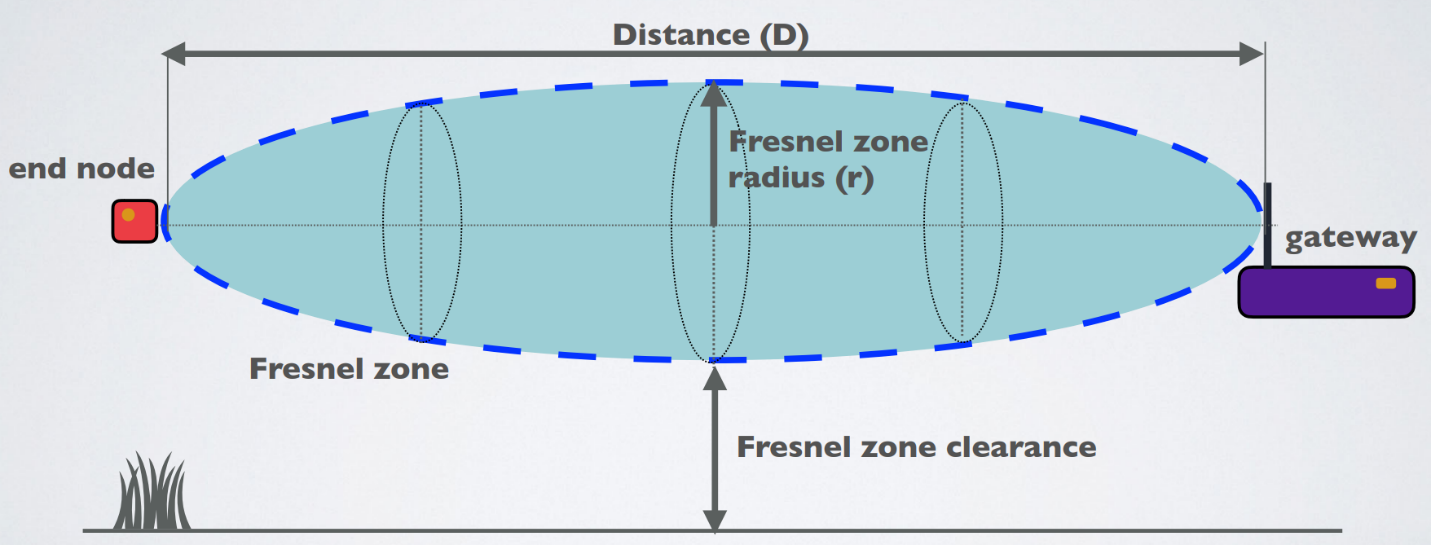

End node sends signal to gateway without any interference No obstacles in the Fresnel zone

Ground is inside the Fresnel zone Reflected signals interfere with the direct signal.
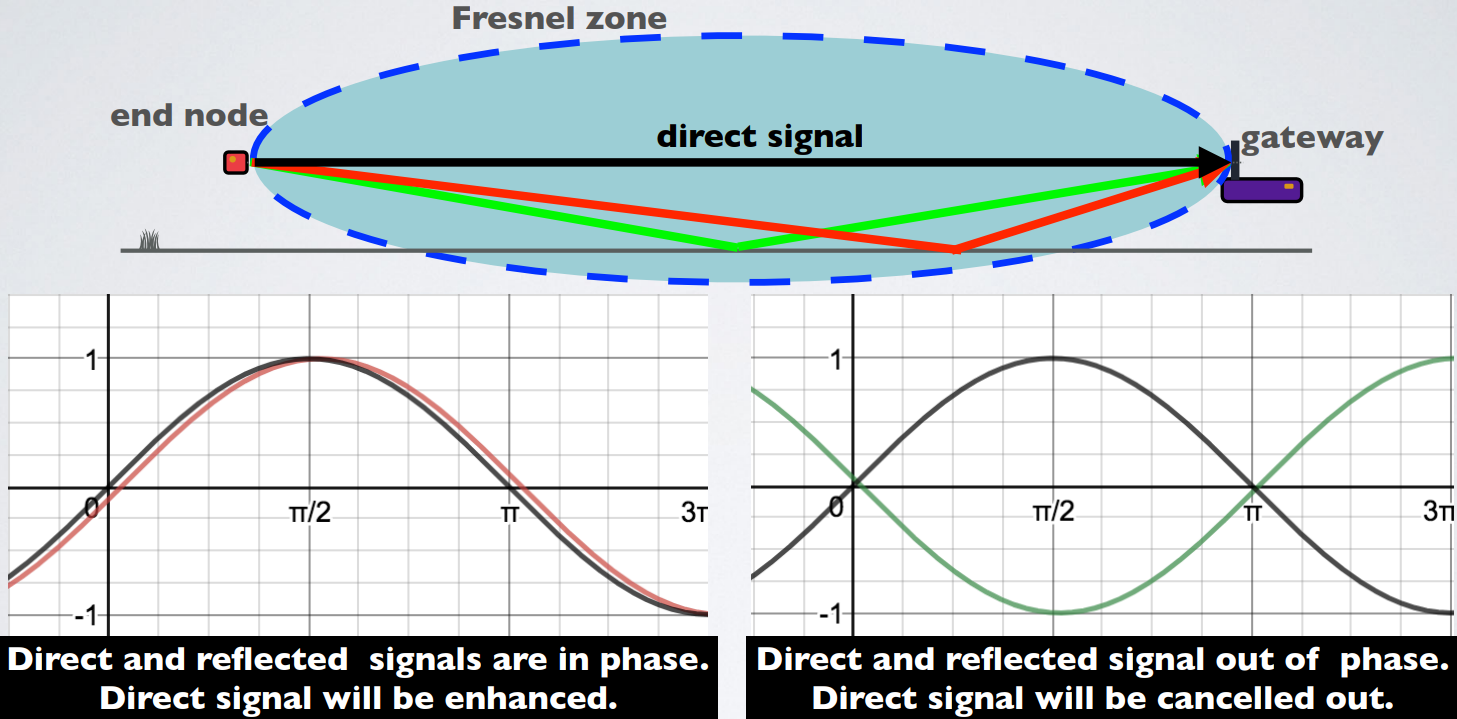

End node sends signal to gateway without any interference No obstacles in the Fresnel zone
- The Fresnel zone equation r = 8.657 x sqrt(D / f) is based on a flat earth. It does not take the curvature of the earth into consideration.
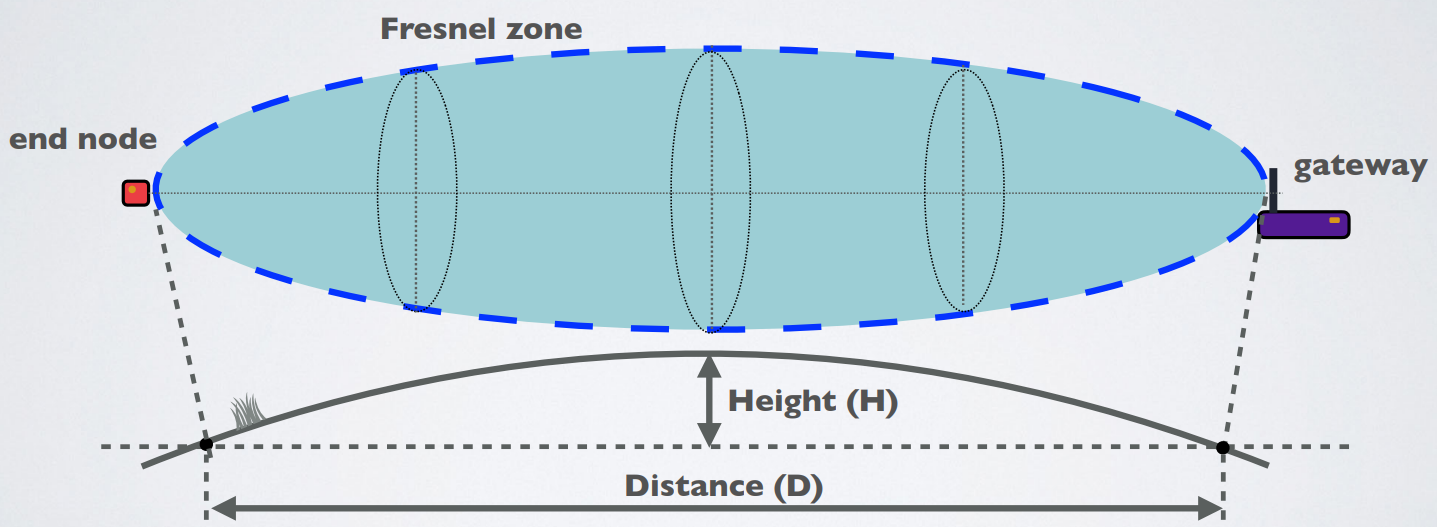
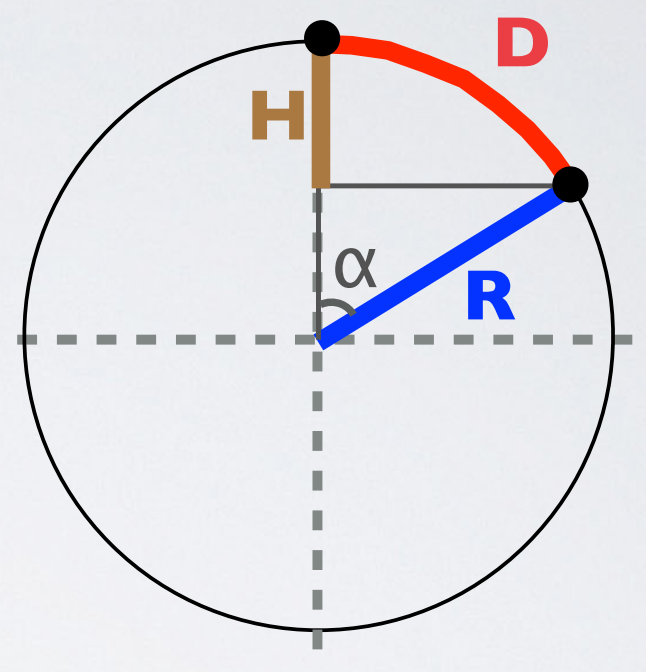
- α = D * 360/2 * π * R
- H = R – (R x cosα)
- H = Height (or earth curvature allowance) in km
- D = Distance between end node and gateway in km
- R = Earth radius in km = 6371 km
- α = Angle between end node and gateway in degrees

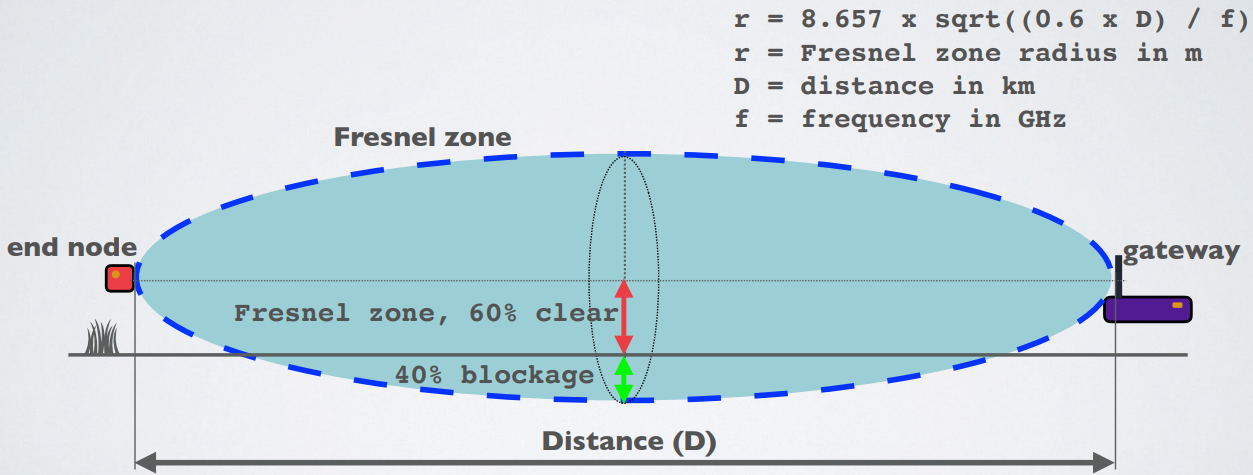
- As a rule of thumb Fresnel zone should always be clear of obstruction but this can be impractical so it is said that beyond 40% blockage, signal loss will become significant.
Improve radio signal performance
For the best radio signal performance:
- The gateway antenna must be placed outdoors at a high location (avoiding obstacles in the Fresnel zone).
- The antenna design for both gateway and end nodes must be optimised for its regional frequency.
- Keep the antenna polarisation vertical for both gateway and end nodes and use omnidirectional antenna to cover a large area.
